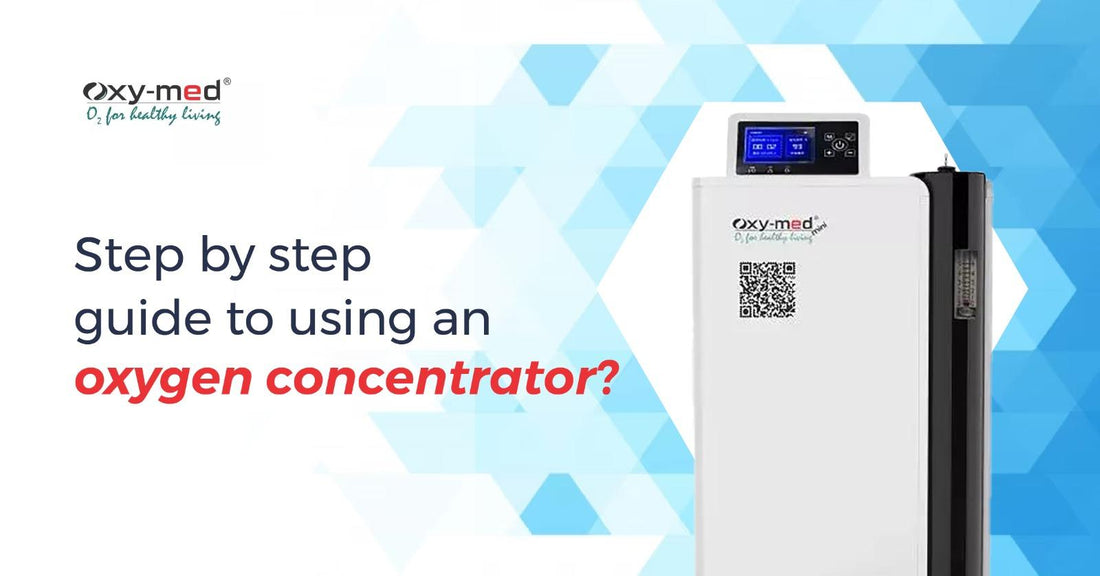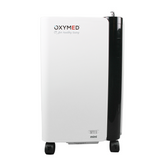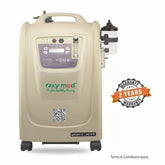Step by step guide to using an oxygen concentrator
Every machine needs maintenance, and an oxygen concentrator is no different. Although minimal maintenance is required, it is important to learn how to initialize and use your oxygen concentrator properly.
When you first buy your machine, you must deliver it to a qualified person who will set it up for you. This person should be able to tell you what kind of maintenance is required after the machine has been installed in your home. Most of the time, this person will provide instructions on how to perform this maintenance on their own, but if they don't know enough about the machine or need help with something else, they will ask for assistance from someone else at their company who is more familiar with these machines.
There are several ways that an oxygen concentrator can malfunction:
- The unit may not work as expected because it needs more power (or some other issue). This can be fixed by adjusting the dials on your machine until it starts working correctly again.
- The blowback valve may not function properly, causing air bubbles (or other foreign objects) to enter your bloodstream instead of pure oxygen. This can be fixed by cleaning out any blockages in the line or changing out parts if necessary
Instructions for using an Oxygen Concentrator
Using an oxygen concentrator is as simple as running a television. The following steps need to be followed:
- Connect the Oxygen Concentrator's power connection to the main power source and turn it on.
- Place the machine in a well-ventilated area, preferably 1-2 feet away from a wall, with free access to the intake and exhaust.
- Install the humidifier (Usually required for Continuous Oxygen flow of more than 2-3 LPM).
- Make sure the particle filter is in place.
- Connect the Nasal Cannula/Mask and double-check that the tubing is not kinked.
- You can turn on the machine by pushing the 'Power' button.
- Set the flow metre to the oxygen flow prescribed by the doctor.
- Put the Nasal Cannula outlet into a glass of water to bubble out the oxygen. This would ensure that oxygen was flowing.
- Breathe with the Nasal Cannula/Mask.
Maintenance of your Oxygen Concentrator
While operating their Oxygen Machines, patients or their caregiver should keep a few things in mind. Some of these things demand special care, while others are simply routine maintenance procedures.
- Using a Voltage Stabilizer.
Voltage fluctuations are a concern in many vicinities. This issue can be fatal to any household electrical equipment, not oxygen concentrators.
After a power outage, the power is restored at such a high voltage that it can damage the compressor. A good quality voltage stabiliser can address this problem. The voltage stabiliser reduces voltage fluctuation and extends the life of the stationary oxygen concentrator.
It is not required to use a voltage stabiliser, but it is highly suggested; after all, you will be paying a significant amount of money to get an oxygen concentrator, so there is no harm in investing a few more dollars to purchase a voltage stabiliser.
- Positioning of the Oxygen Concentrator.
The oxygen concentrator can be kept anywhere in the house, but it should be maintained one foot away from the walls, bed, sofa, and so on while in use.
There should be 1-2 feet of empty space surrounding the air-inlet of your oxygen concentrator since the compressor inside the machine requires space to take in enough room air to be concentrated to pure oxygen inside the machine. (Air-inlet can be on the machine's back, front or sides- depending on the type).
If enough gap for air intake is not supplied, the machine's compressor may overheat since it will not be able to take in a sufficient amount of ambient air, and the machine will give an alarm.
- The Dust Factor.
The dust in the surroundings significantly impacts the machine's early service requirements.
The machine's filters filter out impurities in the air, such as dust particles. These filters become clogged after a few months, completely dependent on the dust level in the room's atmosphere.
When the filter becomes clogged, the quality of the oxygen decreases. When this occurs, most machines begin to sound an alert. In such circumstances, the filters must be updated regularly.
Though it is impossible to eliminate dust from the air, you should avoid using your oxygen machine in a dusty environment; basic precautionary measures can also be taken to reduce it, such as switching the machine off and covering it whenever the house is being cleaned, because the amount of dust level increases dramatically during house cleaning.
If used at this time, the machine will suck in all the dust, clogging the filter quickly.
- Giving rest to the machine.
Oxygen concentrators are designed to function continuously for 24 hours. However, they may encounter the issue of heating up and abruptly stopping.
As a result, after 7-8 hours of continuous use, the concentrator should be rested for 20-30 minutes.
After 20-30 minutes, the patient can restart the concentrator and use it for another 7-8 hours before resting for another 20-30 minutes.
The patient can use the standby cylinder when the machine is turned off. This will extend the life of the concentrator's compressor.
- Rodents in the house.
The rodent moving around the house poses a significant challenge to the stationary oxygen concentrators.
Most stationary oxygen concentrators include vents beneath or behind the unit.
The rodent cannot enter the machine when it is being used.
When the system is turned off, however, the mouse can enter and cause problems like gnawing the wires and urinating on the machine's circuit board (PCB). When water enters the circuit board, the machine fails. PCBs, unlike filters, are relatively costly.
- Filters.
Outside some machines is a cabinet/external filter that may be simply removed. This filter should be cleaned with soap water once weekly (or more frequently, depending on operation conditions). It should be dried completely before re-entering the machine.
Only an authorised service engineer from your equipment provider should change the internal filters. These filters must be replaced less frequently.
- Humidifier Cleaning practices.
- Use clean drinking water for humidification to avoid/delay any long-term obstructions in bottle holes.
- The water should be at least the bottle's minimum and maximum water level indicators.
- The water in the bottle should be replaced every two days.
- The bottle should be cleaned from the inside once every two days.
- Basic precautions and cleaning procedures.
- The machine should be kept on hard ground where the wheels may break. In such instances, lifting the equipment and then moving it is strongly advised.
- The oxygen tube should be free of kinks and leaks from the oxygen outlet where it connects to the nasal prongs.
- Water should not be splashed on the machine.
- The machine should not be kept near a fire or a source of the smoke.
- The machine's outside cabinet should be cleaned using a moderate home cleanser and damp cloth. Then all surfaces should be wiped dry. Do not let any liquid into the device.
Conclusion
- Make use of a high-quality voltage stabiliser.
- Keep the concentrator at least 1-2 feet away from any walls.
- Avoid operating the machine in a dusty atmosphere.
- Perform frequent performance evaluations.
- Keep the equipment running for a while. Allow it to rest.
- Replace the humidifier every two days with clean water.
All of the above procedures will extend the life of the oxygen concentrator and lower your expenditure on equipment repair/service.
On the other hand, an oxygen concentrators can fail at any time because it is a machine. As a result, it is highly suggested that you always have a backup cylinder on hand because a service expert will take some time to arrive at your home to fix the concentrator. Ideally, one should keep a backup cylinder that lasts 24 hours.
Related Products
-
Oxygen Concentrator Mini - 5 LPMThe Oxymed Oxygen Concentrator Mini - 5 LPM is a compact and easy-to-use oxygen delivery system designed for general wellness applications in home environments. With a flow capacity of up to 5 litres per minute, it provides adjustable oxygen enrichment for personal use. Its...
- ₹ 36,900.00
₹ 65,990.00- ₹ 36,900.00
- Unit price
- / per
-
Oxygen Concentrator Mini - 10 LtrThe Oxymed Oxygen Concentrator Mini - 10 Ltr is a powerful, efficient, and medical-grade oxygen delivery solution designed for individuals requiring high-flow oxygen therapy. Engineered with advanced technology, this device ensures a steady and uninterrupted supply of oxygen, making it ideal for home and...
- ₹ 53,000.00
₹ 118,990.00- ₹ 53,000.00
- Unit price
- / per
-
Portable Oxygen Concentrator P2The Oxymed Battery-Powered Portable Oxygen Concentrator P2 is a lightweight, travel-friendly device designed for individuals who need oxygen therapy on the go. With pulse dose technology, it provides efficient oxygen delivery while ensuring maximum mobility. Whether at home, traveling, or outdoors, this concentrator offers uninterrupted...
- ₹ 137,900.00
₹ 219,990.00- ₹ 137,900.00
- Unit price
- / per








